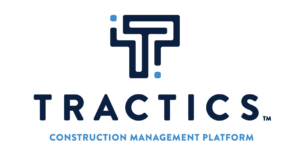A veteran Kansas City startup duo’s latest project — Tractics — is set to disrupt an in-demand, yet underserved, market with its construction management platform for heavy civil contractors.
“True disruption occurs when behavior changes and I think we found an opportunity to change behavior in a positive way and continue to innovate in a way that makes people’s lives better,” co-founder Tyler VanWinkle explained.
“This industry is tax-funded projects,” he continued. “It affects us in our day-to-day life. It’s the roads we drive on. So the fact that we get to do something that could potentially make a whole industry better, that makes a whole public works system work better — and that’s a long term critical mass view — is super exciting.”
Tractics — launched in 2020 and now in the go-to-market phase — is an all-in-one field/office/fleet platform that focuses on everything from the time a bid is awarded to a contractor through the execution phases to the time they get paid, said VanWinkle.
“From time tracking, to foreman time and quantity management, to project management for the heavy general contractor,” he continued. “Then we’ve also built a whole Fleetmatics component — where we have our own beacon set — and we integrate with the OEM manufacturers. We do dispatching, load cycling, haul truck tracking. And we integrate all that back down into this field data at the same time, so that you can truly get a field office window as a general contractor.”
Over the course of the past three and a half years, the 12-person Tractics technology and design team has worked directly with Boomerang — a civil construction contractor out of northeast Iowa — to get the product to what it is today, VanWinkle noted.
While working as a founding partner with Rivet Creative, VanWinkle was approached — through a mutual connection — by Boomerang founder Bryce Ricklefs.
“He said, ‘I’m struggling with technology,’” VanWinkle recalled. “‘I’m running a bunch of different applications. We’ve got a mess. Could you come up and take a look?’”
VanWinkle — along with Rivet founding partner Travis Williams — agreed to perform a technology audit for Boomerang, he said. Although Ricklefs was skeptical, VanWinkle thought he could find something out there that would work for him. He quickly realized Ricklefs was right.
“There’s less than I ever expected and this market is bigger than I ever knew,” he told Ricklefs.
They then started talking about other options and this led to them collaborating with the Boomerang team and starting to build tools for them, VanWinkle shared. After 25 years in the industry, Ricklefs told him it was time for something better.
“One of the statements he made to me that I thought was really interesting was, ‘Explain to me how we can shoot a missile that is inbound to the United States out of the sky in the middle of the night — and no one knows about it — but I can’t figure out how to get my field to get good data back to my office?’” he recalled. “‘The technology is there. Why can’t I get it?’”
After several months of projects for Boomerang, VanWinkle and his team agreed to pivot to working full time to solve the problem of construction management for heavy and civil construction. He and Williams gracefully ended a few client relationships, VanWinkle said, and rolled the Rivet team into what they initially called Boom Solutions; the venture included Ricklefs — and his wife and co-owner Sarah — joining as founding partners and investors. Chris Rigdon and Mike Marley round out the founding partners.
“Having a partner like that allowed us to take developers and engineers — and even myself — up to job sites and put them to work in the field,” he noted. “Where are they hesitating? Where are they pausing? What are they writing on their pants when they’re down in a hole laying pipe? What’s going to make this world better for them?”
They quickly zeroed in on data input, VanWinkle explained.
“If you don’t have good tools to bring good data in, you’re never going to have good data throughout the project,” he continued. “So we started by focusing on that and giving those guys tools that were built for them, rather than forcing them to use tools that were never intended for them.”
He noted that a lot of the other construction management platforms that exist in the industry are dated and slow.
“Very little of it, we feel, was actually built for the field,” he added. “A lot of it was probably built from an accountant’s point of view or from a project manager’s point of view.”
That’s where Tractics Common Data Environment comes in, Van Winkle shared, making it easily available to crews in the field and management in the offices.
“We don’t have application silos,” he explained. “Everything goes up into our cloud, into our SaaS platform. That data will coexist and can be monitored and viewed and reported on in real time, rather than having to traverse through multiple applications through an ecosystem.”
“Over the course of three and a half years, we were able to iterate 20 to 40 times with those guys to build some really great technology to help them do their jobs better,” he added.










































